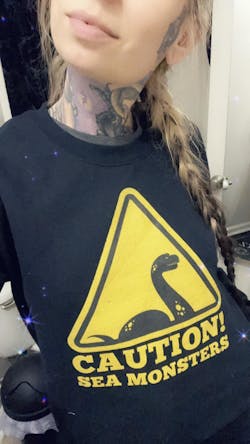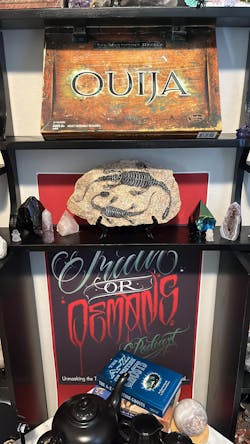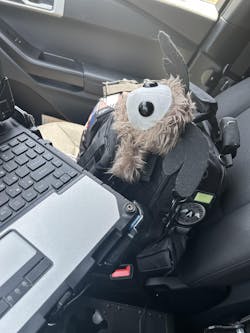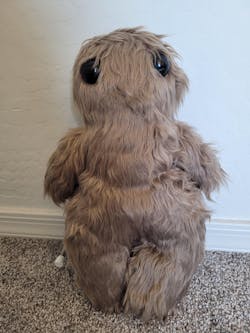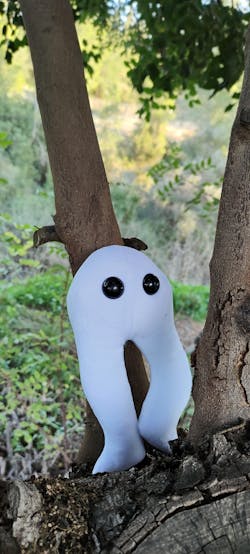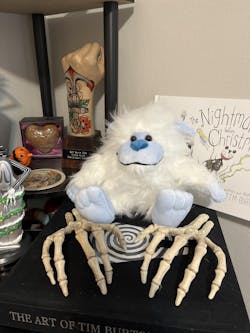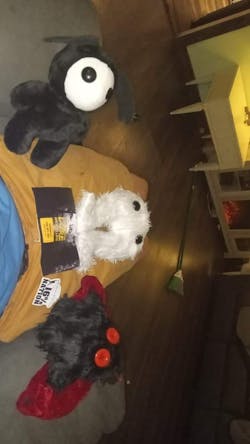In the realm of cryptids and folklore, the Champ cryptid holds a special place. This legendary creature, said to inhabit the waters of Lake Champlain, has been a source of fascination and intrigue for centuries. The lake, a 125-mile-long body of fresh water shared by New York and Vermont, with a portion extending into Quebec, Canada, is the perfect setting for such a creature. The legend of the monster is considered a draw for tourism in the Burlington, Vermont, and Plattsburgh, New York areas. The mystery surrounding Champ has led to numerous investigations, scientific studies, and even inspired a variety of cultural and media representations.
The Origin of the Champ Legend
The legend of Champ is deeply rooted in the history and folklore of the Lake Champlain region. The tales of this elusive creature have been passed down through generations, each adding a new layer to the mystery.
The Iroquois Legends
The story of Champ dates back to the Iroquois legends, where tales of giant snakes named Onyare'kowa were prevalent. These legends laid the groundwork for the Champ cryptid, setting the stage for a creature that would continue to captivate the imagination of generations. The Iroquois, a powerful Native American confederacy located in the northeastern part of North America, had a rich tradition of storytelling. Their legends often featured powerful creatures that embodied the natural world around them. The Onyare'kowa, or "Great Serpent," was one such creature. These tales were not just simple stories, but a way for the Iroquois to explain the world around them and pass on important cultural and moral lessons.
Samuel de Champlain's Encounter
The first European said to have sighted Champ is Samuel de Champlain, the founder of Québec and the lake's namesake. Although there's no concrete evidence that Champlain documented a sighting of a "20-foot serpent thick as a barrel, and a head like a horse," he did record the presence of large fish in the lake. This encounter, whether real or embellished, has become a cornerstone of the Champ legend. Champlain's accounts of his travels and discoveries were widely read in Europe, and his mention of a large creature in Lake Champlain undoubtedly sparked interest and speculation. Over time, this single account has been retold and reinterpreted, transforming into the modern legend of Champ.
Sightings and Evidence
Over the years, there have been over 300 reported sightings of Champ, adding to the legend's credibility and intrigue. These sightings range from vague shapes in the water to detailed encounters, each one unique yet sharing common characteristics that define the Champ legend.
The 1819 Report
In 1819, a report in the Plattsburgh Republican detailed a sighting by a "Capt. Crum," who claimed to have seen an enormous serpentine monster. Despite the distance, he provided a detailed description of the creature, including its length, color, and unique features. Crum estimated the monster to have been about 187 feet long and approximately two hundred yards away from him. Despite the great distance, he claimed to have witnessed it being followed by "two large Sturgeon and a Bill-fish" and was able to see that it had three teeth and eyes the color of peeled onions. He also described the monster as having "a belt of red" around its neck and a white star on its forehead. This account, while certainly sensational, added a new level of detail to the Champ sightings and fueled public interest in the creature.
Sheriff Nathan H. Mooney's Sighting
Sheriff Nathan H. Mooney's 1883 sighting brought the Champ cryptid into the public eye. He claimed to have seen a water serpent close to the shore, describing its size and even the "round white spots inside its mouth." Mooney's sighting led to many more alleged eyewitnesses coming forward with their own accounts of Champ. Mooney claimed that he was so close that he could see "round white spots inside its mouth" and that "the creature appeared to be about 25 to 30 feet in length". Mooney's sighting led to many more alleged eyewitnesses coming forward with their own accounts of Champ. These accounts, while varied in detail, all described a large, serpentine creature living in Lake Champlain, further cementing the legend of Champ in local folklore.
P. T. Barnum's Interest
The legend of Champ even caught the attention of famous showman P. T. Barnum. In 1873 and 1887, Barnum offered rewards for anyone who could bring him the monster, further fueling public interest in the creature. Barnum, known for his circuses and exhibitions of curiosities, saw the potential in the Champ legend. His offers of reward, while never claimed, were widely publicized, leading to a surge in interest and reported sightings of Champ. Even today, Barnum's involvement with the Champ legend is often cited as evidence of the creature's existence.
The Mansi Photograph
In 1977, Sandra Mansi took a photograph while on vacation that appears to show a creature with its head out of the lake. The photograph has been the subject of much debate, with some suggesting it could be a rising tree trunk or log. The Mansi photograph is one of the most compelling pieces of evidence in the Champ legend. The image, which appears to show a large creature with a long neck and small head, is reminiscent of descriptions of the Loch Ness Monster and other lake cryptids. While skeptics have suggested that the object in the photo could be a log or other non-animal object, others believe it to be genuine evidence of Champ's existence. The debate over the Mansi photograph has only added to the mystery and intrigue surrounding Champ.
The 2005 Video Evidence
A video taken by fishermen Dick Affolter and his stepson Pete Bodette in 2005 reportedly shows Champ. The images have been interpreted in various ways, with some seeing the head and neck of a plesiosaur-like animal, while others suggest it could be a fish or eel. The video, while grainy and open to interpretation, has been touted as some of the best evidence for Champ's existence. The footage was analyzed by two retired FBI forensic image analysts, who concluded that it appears authentic and unmanipulated. However, they could not definitively identify the creature in the video, leaving the mystery of Champ unsolved.
The Sound Recordings
In 2003, the Fauna Communications Research Institute recorded sounds from within the lake that were similar to those produced by Beluga whales or dolphins—neither of which are known to live in Lake Champlain. These recordings, while not visual evidence, provide another layer of intrigue to the Champ legend. The sounds, described as echolocation, are used by certain marine animals to navigate and find food. While some believe these sounds could be evidence of Champ, others suggest they could be originating from a known species of fish or other aquatic animal. The mystery of these sounds remains unsolved, adding to the ongoing debate about the existence of Champ.
Theories About Champ's Identity
Over the years, various theories have been proposed about Champ's identity. Some suggest that "Champ" could be a member of the family Crocodylidae (crocodiles), while others propose the longnose gar or the lake sturgeon as more probable candidates. Each theory attempts to explain the sightings and evidence through known species, offering a more rational explanation for the Champ phenomenon. However, none of these theories have been able to conclusively explain all the sightings and evidence, leaving the mystery of Champ unsolved.
Cultural Importance of Champ
The legend of Champ has had a significant impact on the local culture and economy of the Lake Champlain region. From tourism to sports, the influence of Champ can be seen in various aspects of local life.
Champ Day and the Vermont Lake Monsters
The legend of Champ has become a significant attraction, generating revenue for the local area. The village of Port Henry, New York, holds a "Champ Day" every August, and the Vermont Lake Monsters baseball team has adopted Champ as their mascot. These events and organizations celebrate the legend of Champ, drawing tourists and fans from around the world. They also contribute to the local economy, providing jobs and revenue for local businesses.
Champ in Popular Media
Champ has also made its way into popular media. A feature film, "Lucy and the Lake Monster," based on a bestselling children's novel, is currently in post-production as of May 2023. This film, along with numerous books, documentaries, and TV shows, demonstrates the widespread interest and fascination with the Champ legend. These media representations help to keep the legend alive, introducing Champ to new generations and ensuring that the mystery of Lake Champlain continues to captivate and intrigue.
Conclusion
The legend of the Champ cryptid continues to captivate and intrigue. Whether it's a misunderstood species, a figment of collective imagination, or a genuine cryptid, the mystery of Champ adds a layer of enchantment to Lake Champlain, making it a place of wonder and fascination. The numerous sightings, the various pieces of evidence, and the ongoing debate about Champ's identity all contribute to the enduring appeal of this legend. As long as there are unexplained sightings and unsolved mysteries, the legend of Champ will continue to thrive, capturing the imagination of those who hear its tale.
FAQs
-
What is the Champ cryptid? Champ is a legendary lake monster said to inhabit Lake Champlain, a body of fresh water shared by New York and Vermont, with a portion extending into Quebec, Canada.
-
Who first sighted Champ? The first European said to have sighted Champ is Samuel de Champlain, the founder of Québec and the lake's namesake.
-
What evidence exists of Champ's existence? Evidence includes various eyewitness accounts, a photograph taken by Sandra Mansi in 1977, a video taken by fishermen in 2005, and sound recordings from within the lake.
-
What theories exist about Champ's identity? Theories range from Champ being a member of the crocodile family to being a longnose gar or a lake sturgeon.
-
What is the cultural significance of Champ? Champ has become a significant cultural icon and revenue-generating attraction. It is celebrated in local events like "Champ Day" and serves as the mascot for the Vermont Lake Monsters baseball team.
 Sold out
Sold out Sold out
Sold out Sold out
Sold out








